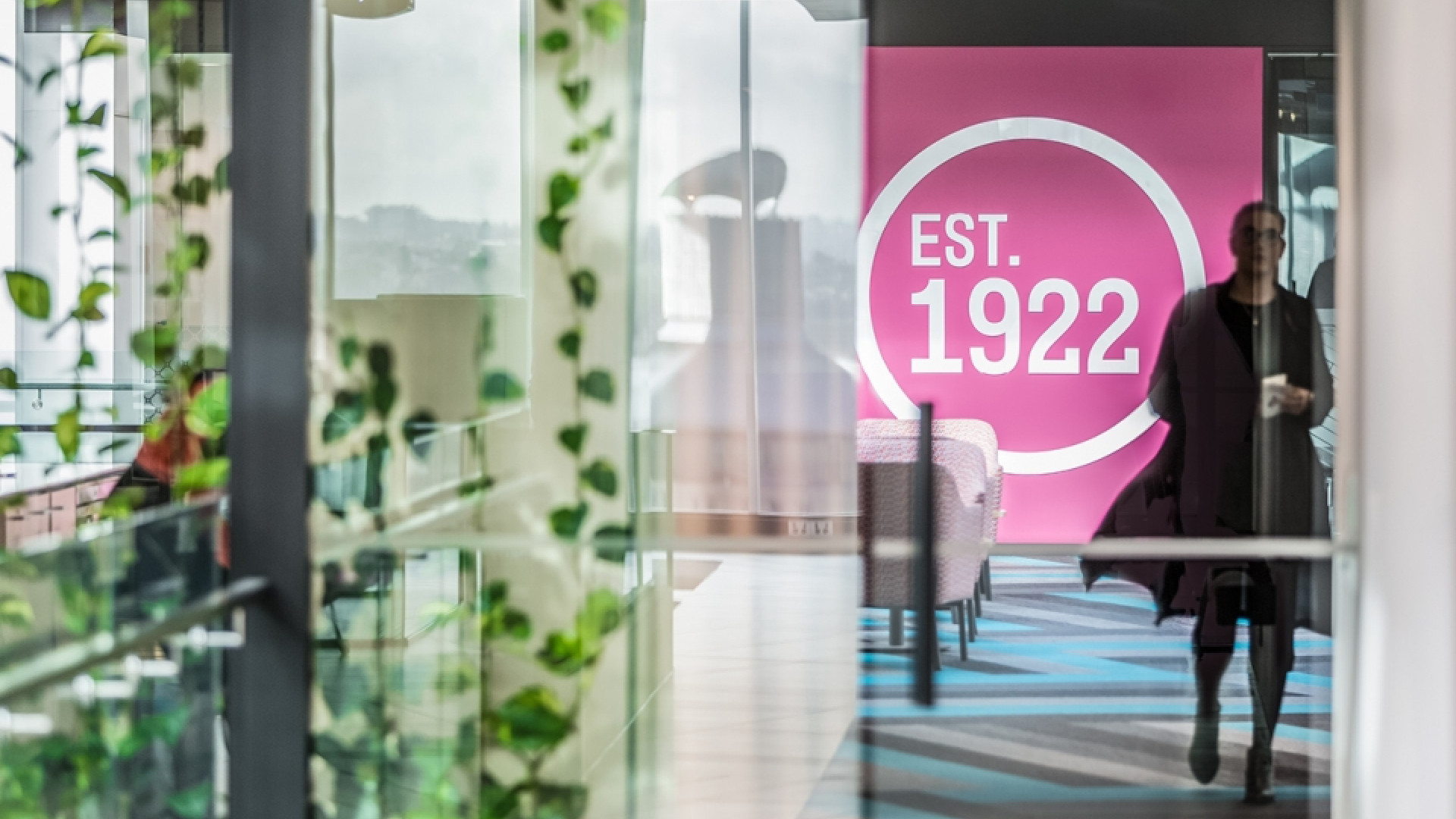Moving into a new space or renovating an existing one is a fantastic opportunity to consider how to use the environment to engage key audiences like customers and important stakeholders. Their experience at your office will help reinforce what they know about you and how they feel about your brand. Just as importantly, office environments play an important role in shaping culture, strategic alignment and effective communication with your people. The environment becomes the canvas for working more effectively as an organisation.
The following are 10 starters we often talk about with clients when planning the brand and staff engagement layer of their office fit-out.
1. User Journey
Start by identifying the key journeys through your space. Where will visitors enter? What will they see first? Do they go to reception and then a waiting area before being taken to a meeting room? What are the opportunities along this journey to tell your story?
The same questions apply to staff. When they come out of the lift, where will they go? Lockers? Kitchen? Their desk? What will they walk past? What are the places they will visit during the day? Most people will visit the photocopier, the kitchen, the watercooler and the toilets. These spaces are all opportunities to tell and reinforce your story.
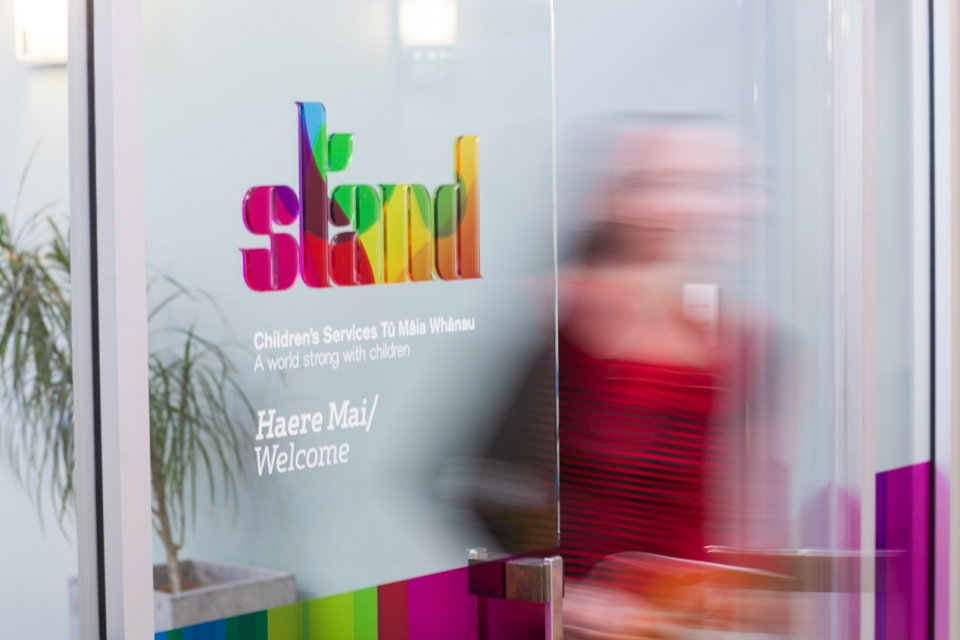
2. Your brand story
For external audiences the public facing side of your office environment is a great place to tell your story. This could be information about your history and evolution, your business, your purpose, your brand promise, your products, your customers and your service proposition. Use the journey identified above to layer your story so that each one builds and reinforces the earlier one.
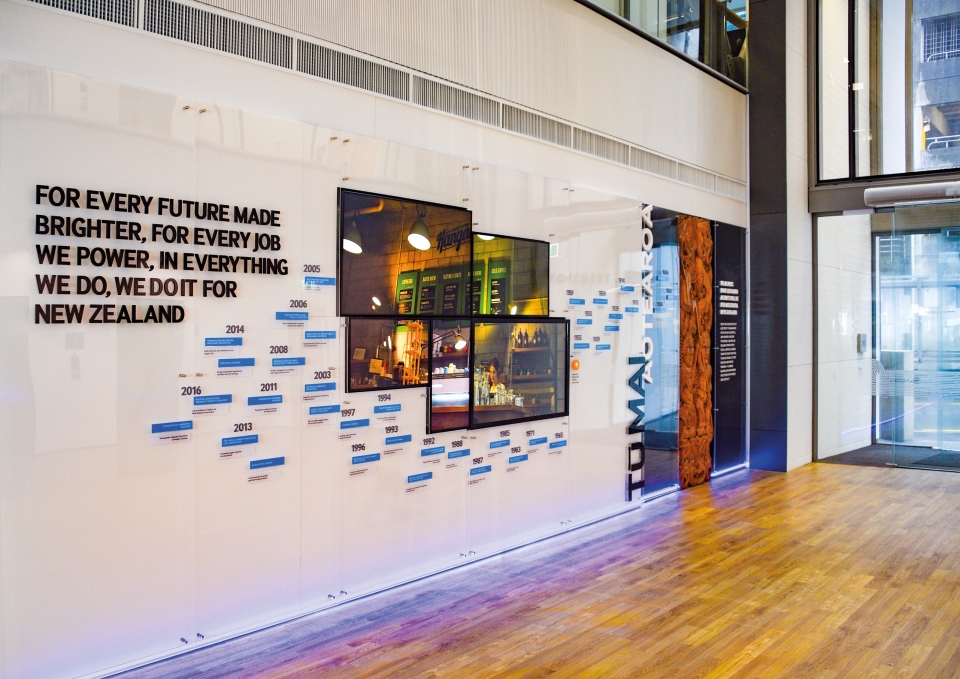
Transpower head office, Wellington
3. Strategy & Culture
The office space is also a great way to engage your staff in the business. Visually express key culture messages that reflect what matters around here. Demonstrate and reinforce your values in bold and proud ways. Reinforce diversity, inclusiveness and other elements that are core to who you are. Use the environment to reinforce who the customer is, key products and customer touchpoints. Demonstrate the important things everyone needs to do to deliver to customers. Show your people in action, especially when your team is located in many places and/or where the core business is conducted elsewhere.
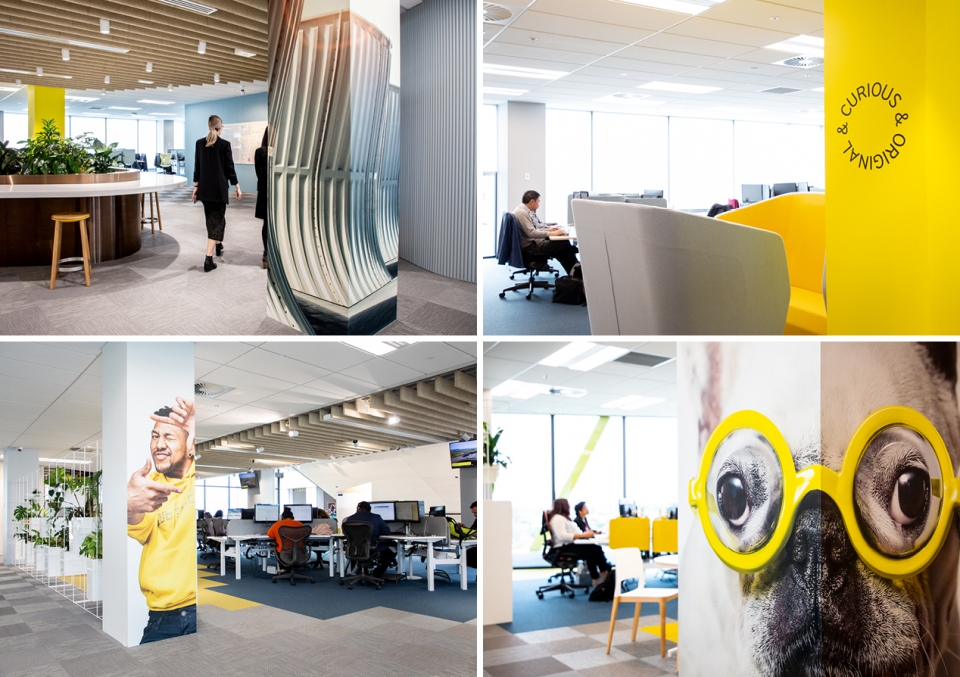
Mercury head office, Auckland
4. Navigation & safety
Don’t forget the importance of helping everyone in the business know where to find things – bathrooms, kitchens, elevators and exits. Create a system around naming meeting rooms and congregation spaces that make it easy for people to find and remember them. Use the environment to communicate core health and safety messages in ways that relate to how people use the space. For example, wellbeing messages about looking out for each other in spaces where people meet.
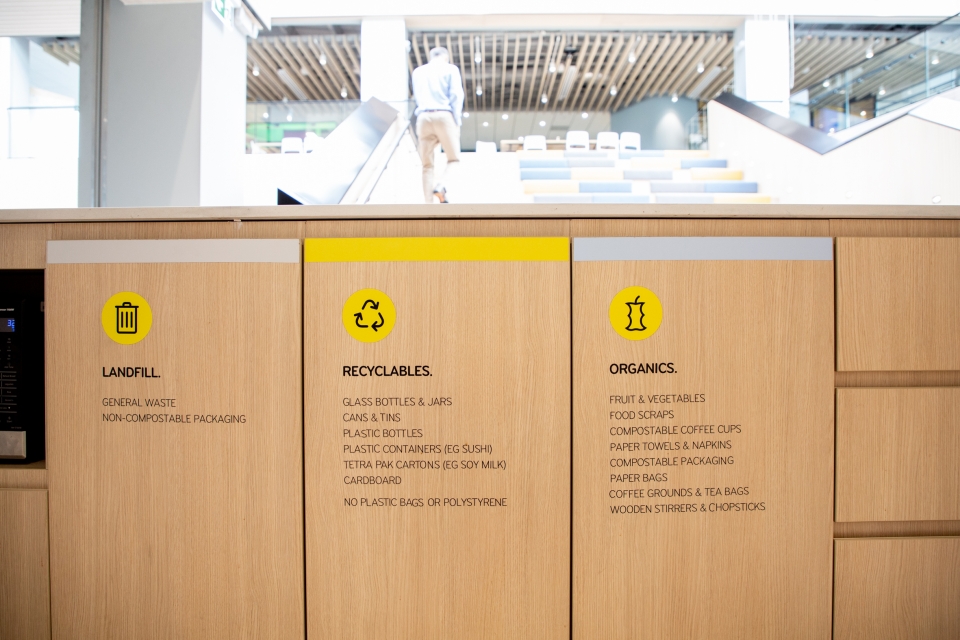
Mercury head office, Auckland
5. Multi-experience
Some messages are about reminding people about the things that matter and we use the space for regular repetition. Other messages require more engagement. These may require digital experiences – like video and animation - where sound and movement help increase engagement and memorability. Others involve audiences doing and experiencing things to become more involved. This is where interactive displays, AR and VR could come into play. And while you’re at it, think about places for staff to engage back – things to comment on; places to write, draw and express themselves; even places for them to take photos to post on Instagram. An engaging office environment will have a mix of these.
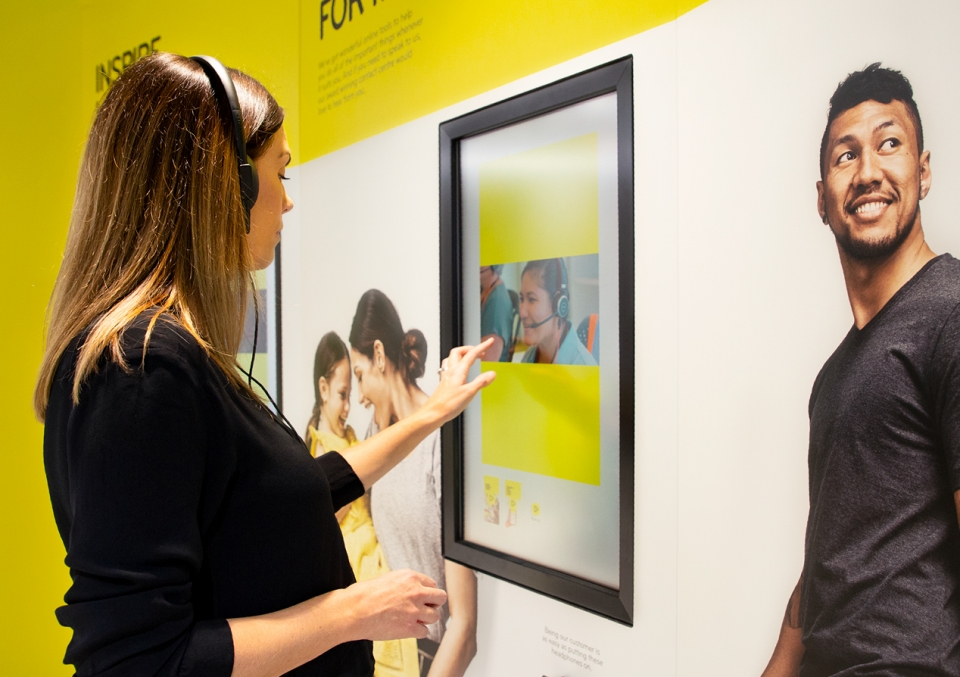
Mercury head office, Auckland
6. Personality
Most office fit-outs use neutral colours generally for hard (and expensive) surfaces like walls and floors. Use colour, texture, movement, typography, photography, art, plants, soft furnishings and interesting objects to bring the space to life. The office environment should reflect your personality, your energy and the people who work there. While there is an overall personality, also think about zones where the tone may need to change; for example, quiet reading and working areas vs active socialising spaces.
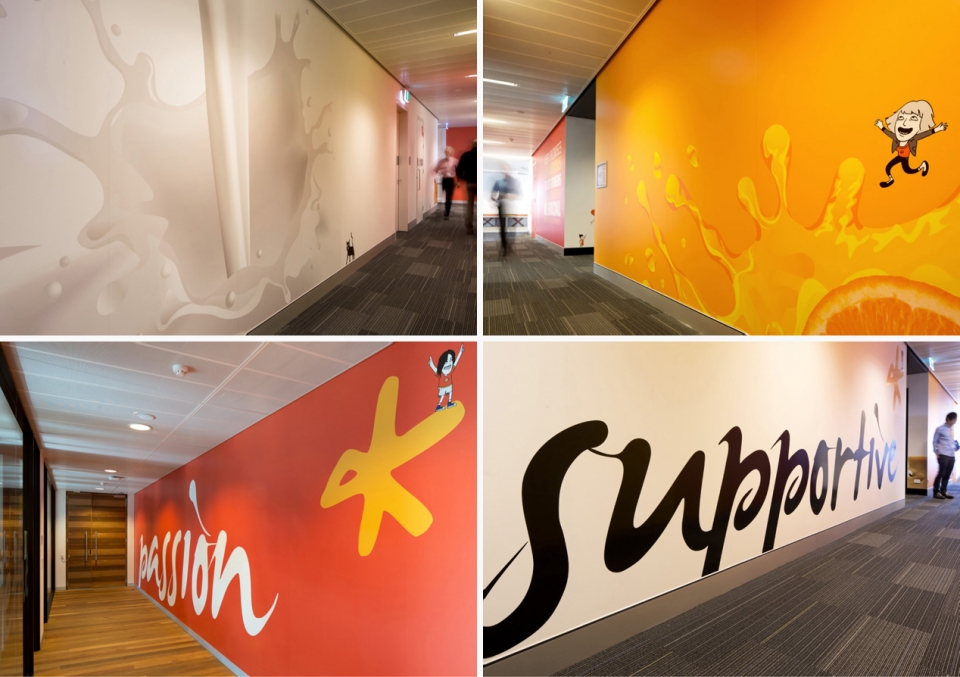
Lion, Olympic Park, Sydney
7. Use what’s available
Most modern office spaces are open plan and are surrounded by a bank of glass. The available walls for communicating are limited. You have to use what you have and this includes ceilings, floors, stairwells, pillars, lockers, partitions, meeting rooms and even the bathrooms. There’s always a clever way to hang or project something where other options don’t exist. Lighting and sound also become important storytelling dimensions in these spaces.
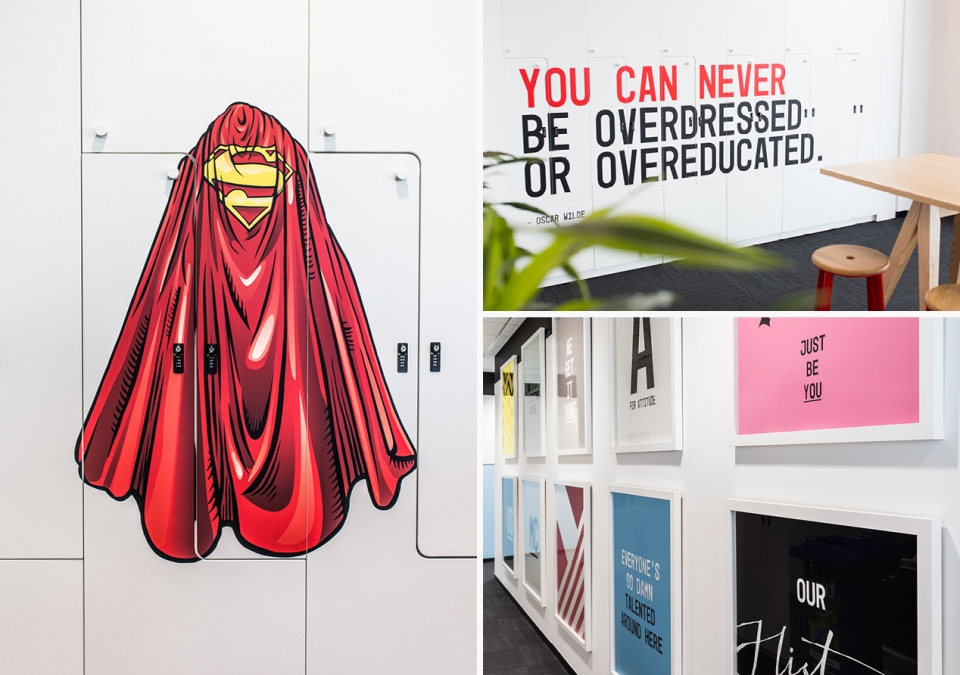
Meredith Connell, Auckland
8. Design consistency
You can usually see far into the distance with most open plan offices meaning they can become visually cluttered. Have a clear – and single-minded – design idea, supported by a cohesive tone and feel. Be clear on your colour palette, fonts, graphic and photographic styles and stick to them. Otherwise you could be adding to the noise.
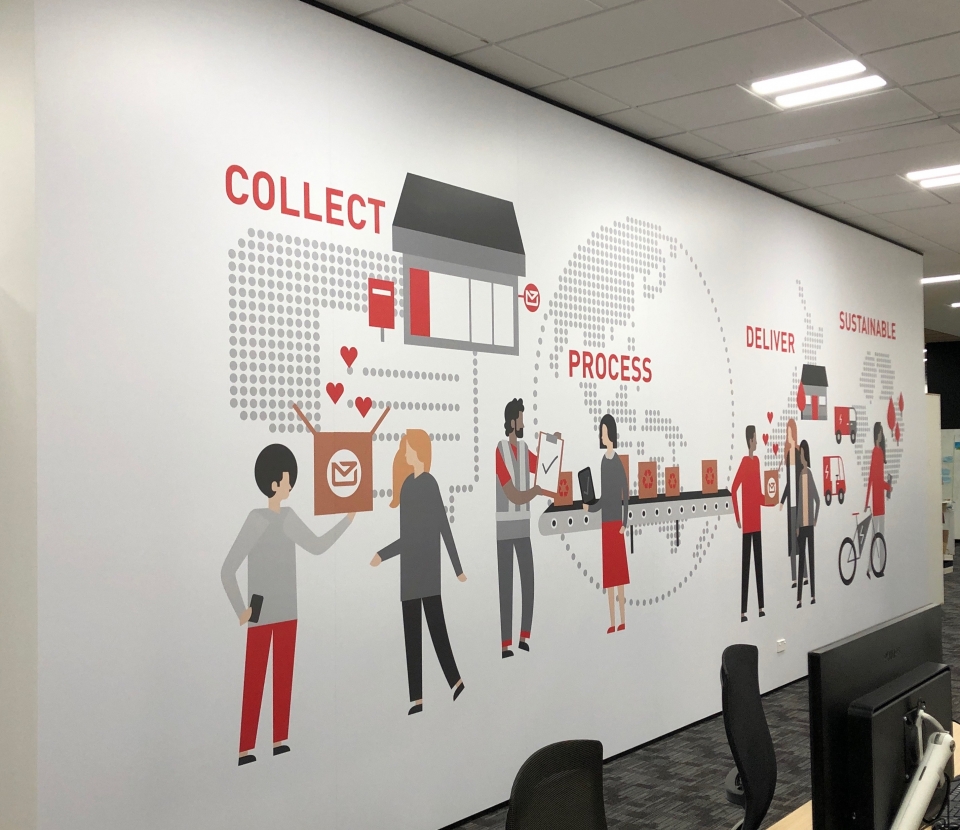
NZ Post, Wellington
9. Noticeboards
Build-in ways to keep people updated about the everyday things that are happening in the business. Electronic noticeboards in and/or by lifts, in kitchens, bathrooms and by photocopiers are great (and cost effective) ways to tell people about an upcoming event and to celebrate International Women’s Day, Maori Language week and other similar milestones. They reduce the cost, clutter and ugliness of lots of posters stuck up all over the office.

NZ Drug Foundation, Wellington
10. Durability
Offices spaces are living environments. Make sure that all materials are hard-wearing and can be changed out or updated in an easy and cost-efficient way, when necessary. Think about portability as well - moving things around provides opportunities to freshen things up and to keep staff engaged with your space.
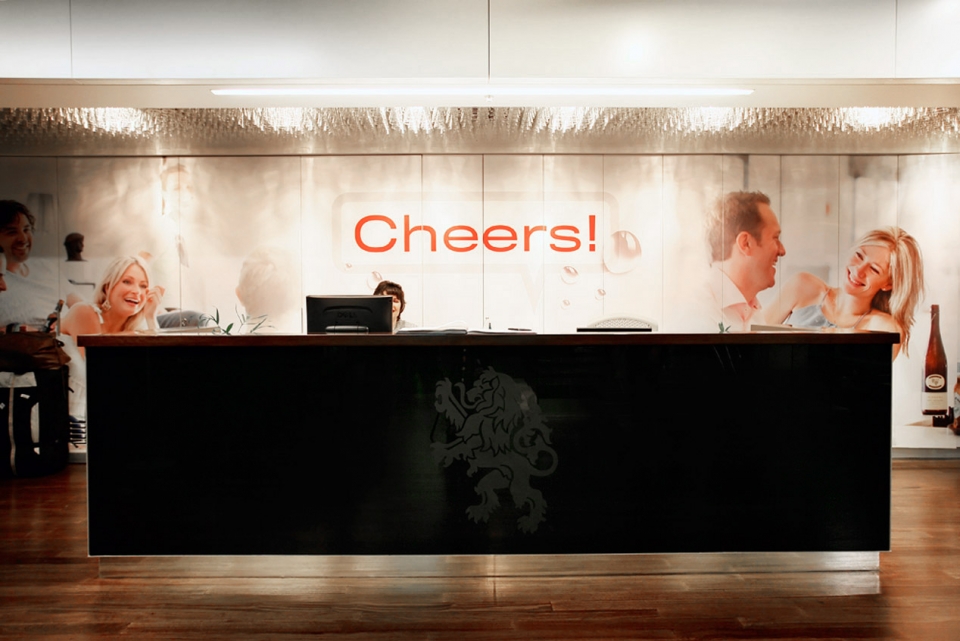
Lion, Sydney CBD
See a portfolio of full case studies of these and other workplace engagement examples here.

